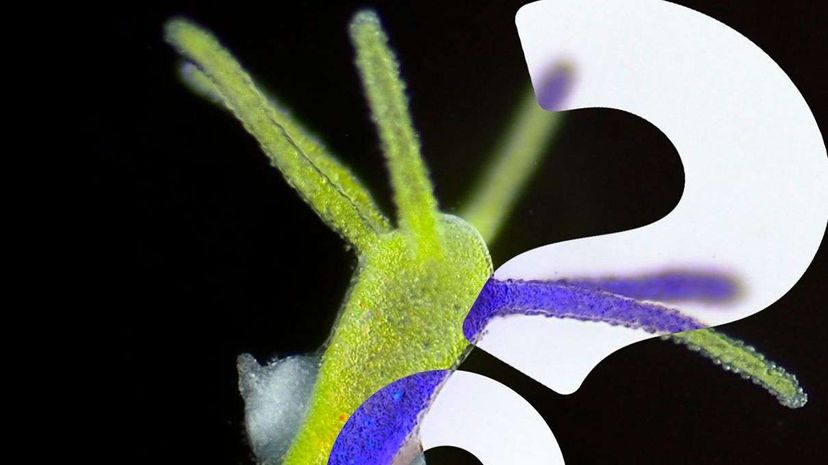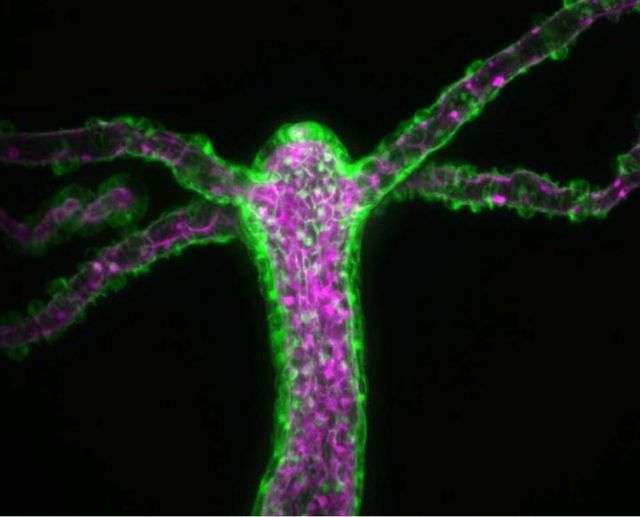
You can sort the fictional version of that death match on your own time, but let's take a moment to consider the outcome of a real-life encounter between members of the Hydra and Cyclops genera. When these tiny freshwater organisms encounter each other, it typically plays out one way.
First, the Hydra reaches out with poisonous, barbed tentacles and stuns its uniocular prey. The Hydra now has the Cyclops at its mercy, but how can it eat without a mouth? Ah, the Hydra has an answer: It rips open to form a nightmarish maw that can stretch wider than its own body. Then it engulfs the Cyclops and closes the wound-mouth over the doomed creature. The skin mends back together seamlessly, leaving no trace of the hole.
Advertisement

Yes, the Hydra is a horrifically wonderful creature — and now a team of researchers from the University of California, San Diego have uncovered the mechanics of its unique feeding strategy. As detailed in their study, the researchers engineered transgenic Hydra vulgaris polyps with fluorescent proteins to create "glowing" tissue layers. This way they were able to observe the skin cells as they warped and deformed, opening the creature's mouth the same way muscles in the iris contract to open the pupil of a human eye.
Between this process, Hydra's asexual budding and its seemingly ageless physiology, there's much to wonder — and plenty of reasons to be thankful the organism is less than half an inch long. Learn more about the shape-shifting and slightly terrifying animal by watching the video above.
Advertisement
